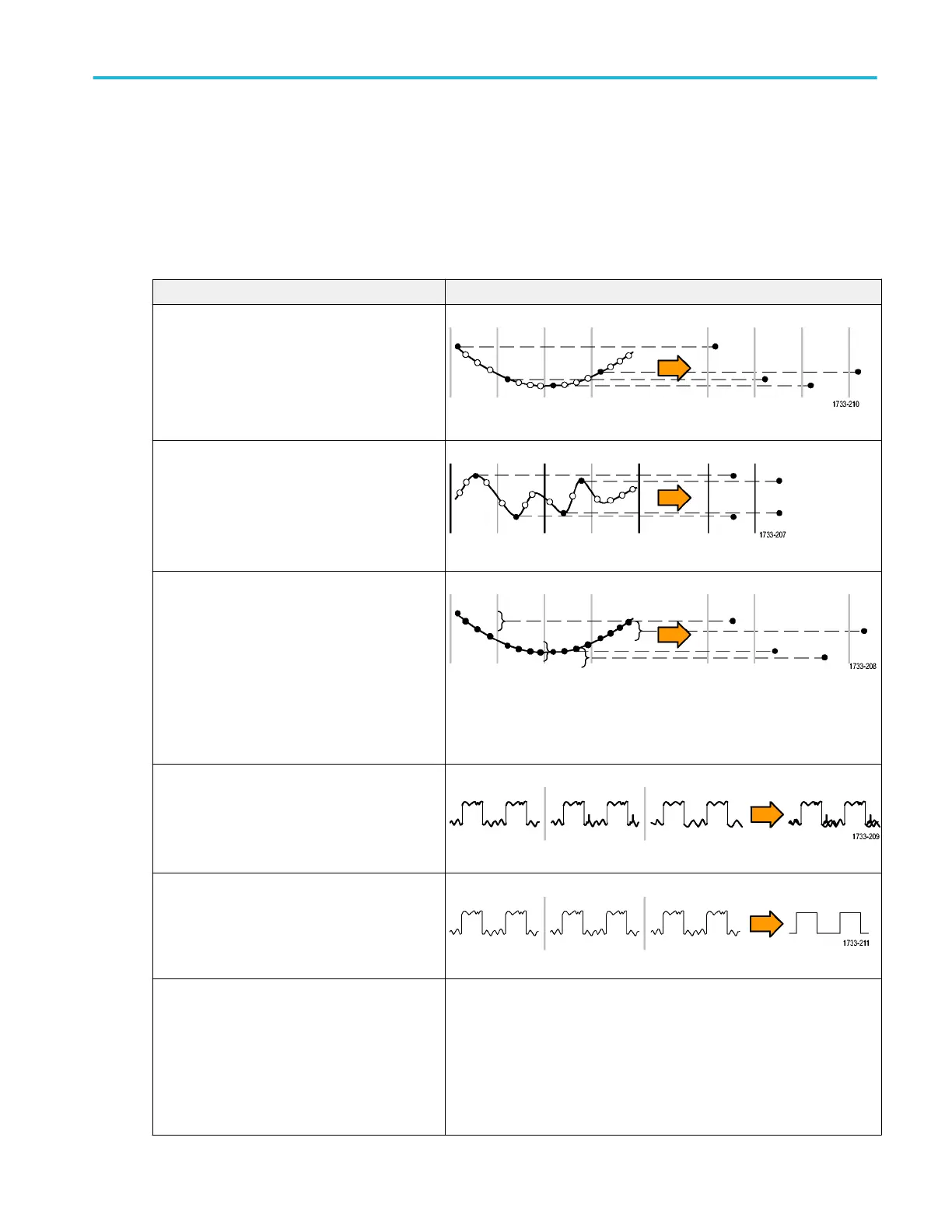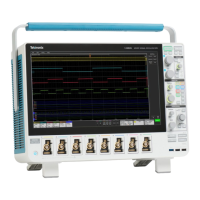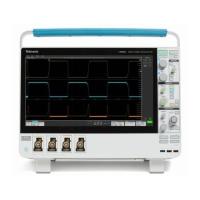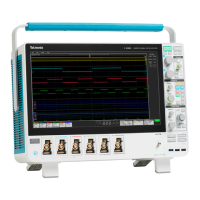Acquisition modes
Acquisition is the process of sampling an analog signal, converting it into digital data, and assembling it into a waveform record,
which is then stored in acquisition memory. The acquisition mode determines how the waveform record points are calculated
from the sampled waveform data.
How the acquisition modes work
Acquisition mode
Sample mode retains the first sampled point from
each acquisition interval. Sample is the default
mode. The instrument does no post processing of
the acquired samples in this mode.
Peak Detect mode retains the highest and lowest
values of all the samples in two consecutive
acquisition intervals. This mode only works with
real-time, noninterpolated sampling and is useful
for catching high frequency glitches.
High Res mode applies unique FIR filtering based
on the current sample rate. This FIR filter
maintains maximum bandwidth possible for that
sample rate while rejecting aliasing. The filter
removes noise from the oscilloscope amplifiers
and ADC above the usable bandwidth for the
selected sample rate. Implementation of the filter
in hardware, ahead of the trigger and storage,
reduces trigger jitter and enables Fast Acq while in
High Res mode.
Envelope mode finds the highest and lowest
record points over many acquisitions. Envelope
uses Peak Detect for each individual acquisition.
Average mode calculates the average value for
each record point over many acquisitions. Average
uses Sample mode for each individual acquisition.
Use Average mode to reduce random noise.
FastAcq
™
mode is helpful in finding elusive signal
anomalies. Fast acquisition mode reduces the
dead time between waveform acquisitions,
enabling the capture and display of transient
events such as glitches and runt pulses. Fast
acquisition mode can also display waveform
phenomena at an intensity that reflects their rate of
occurrence.
Waveform acquisition concepts
MSO54, MSO56, MSO58, MSO58LP, MSO64 Help 413

